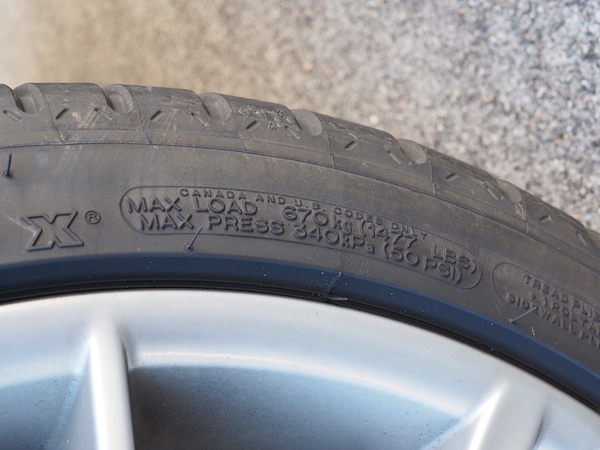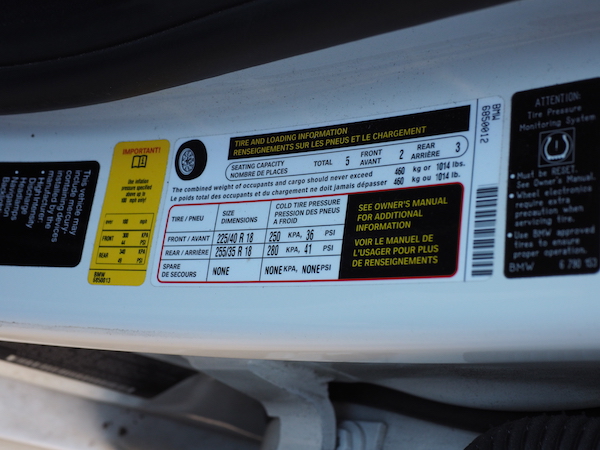My father was a mechanic for Buick for a few years long before he even met my mother. Despite still wrenching on his cars to this day, I’ve inherited distressingly little of his mechanical prowess.
Basic car maintenance is all I can handle. Changing my oil, for example. I’m also capable of properly inflating my tires. I thought this was something everyone knew how to do, but in talking with friends and family lately, it’s becoming clear to me this common knowledge isn’t so common.

The above is the pressure rating on my tires. You’ll note it says the Max Pressure is 50 pounds per square inch. The key word here is maximum.
You should not be inflating your tires to this pressure.
The pressure shown on the tire is its maximum operating pressure. That’s a hint to you that you should never be filling your tire to that pressure. It’s the point of no return.
Instead, you should be looking for this:

In any car I’ve ever driven—American, Japanese, or German—this label is in the driver’s door jamb. On this label, you can see the recommended tire inflation, when the tires are cold, assuming normal load. In the case of my car:
Front tires: 36 PSI
Rear tires: 41 PSI
If I knew I was going to be loaded down really heavily, due to carrying lots of people, cargo, or a trailer, these pressures would change. In that case, I would consult my owner’s manual for the correct pressures.
You should always inflate your tires to the pressures in your driver’s door jamb or owner’s manual.
It’s also worth noting that as temperatures change, so will your tire pressures.
Whenever you experience a large temperature swing, like the change between
seasons, you should check your tire pressure. As the temperatures drop, your
pressures will as well. As the temperatures rise, so will your pressures.
Turns out PV=nRT does have a use, after all.
Remember that properly inflated tires are key for both safety and efficiency. Make sure you check your tire pressures periodically, and always inflate to what the car asks for, not the tire.